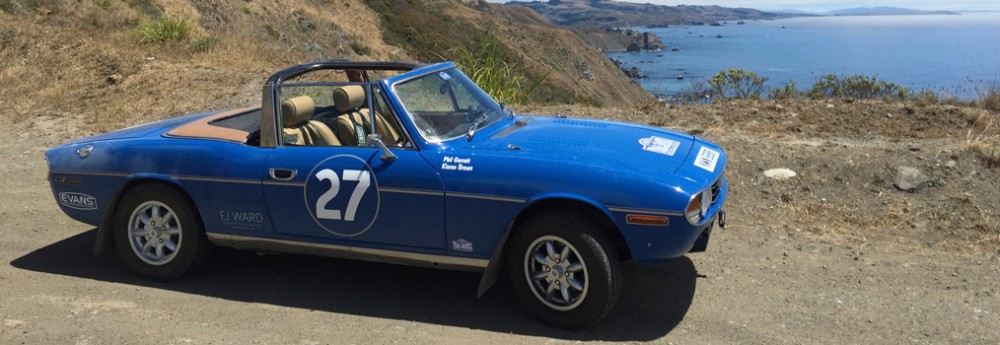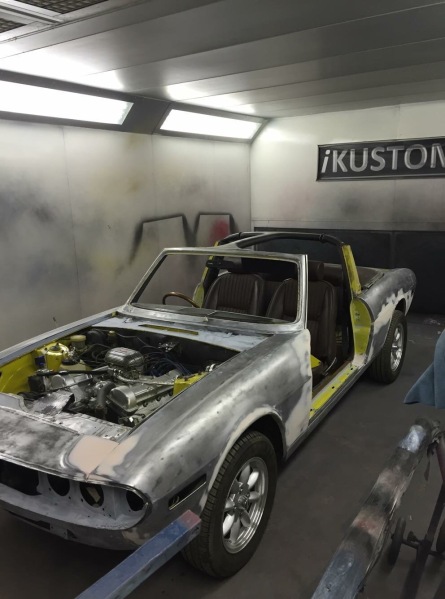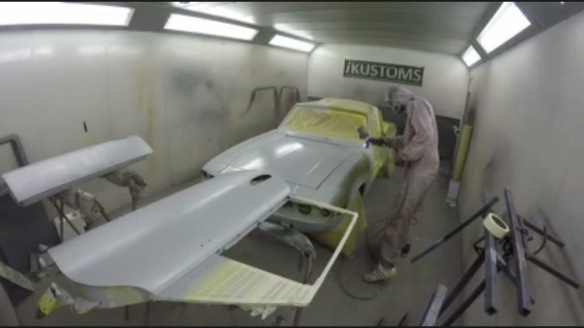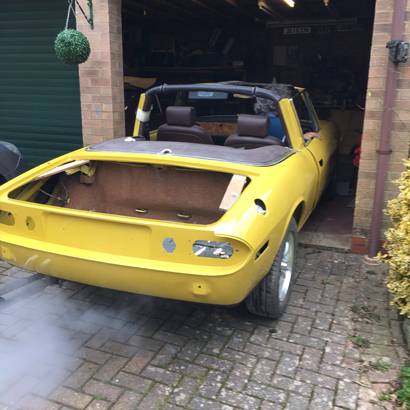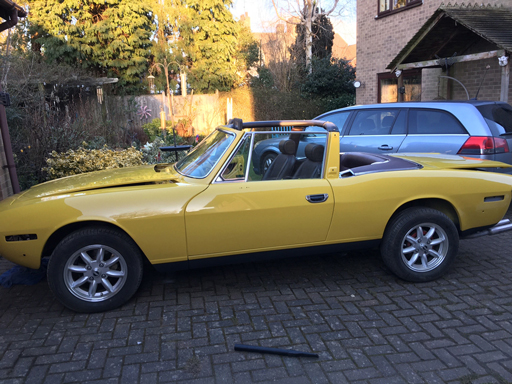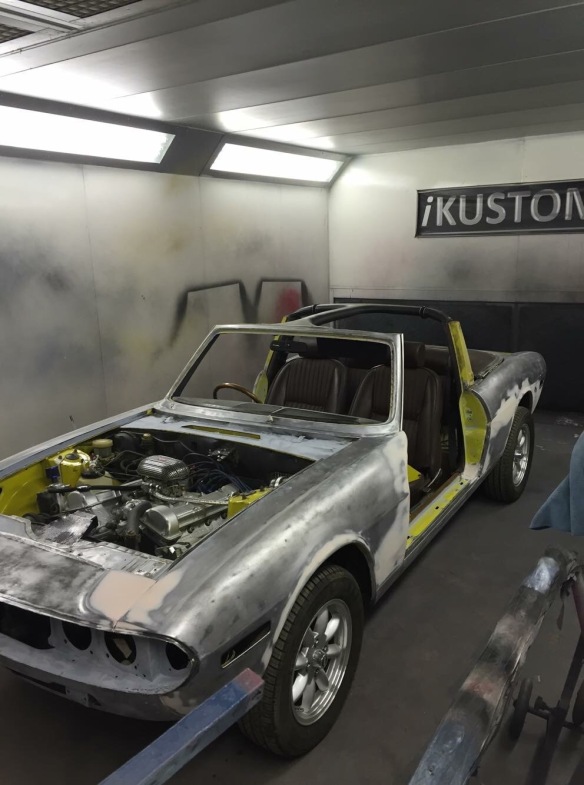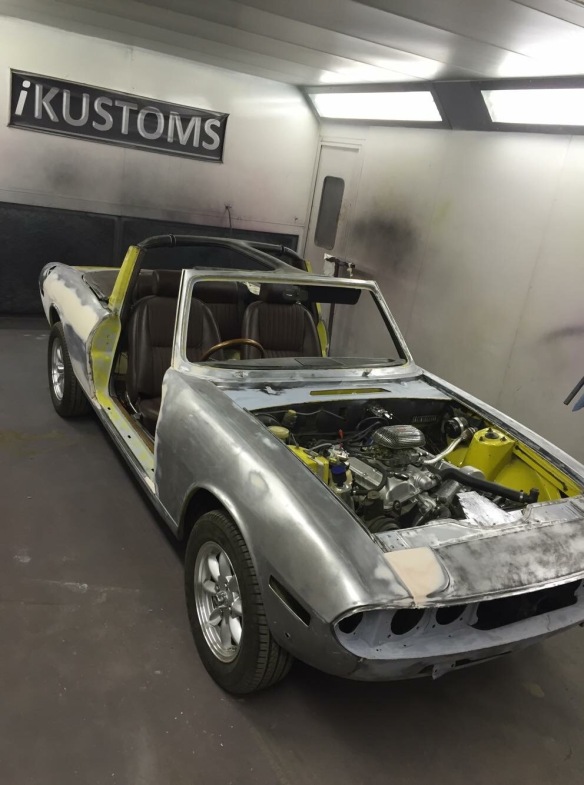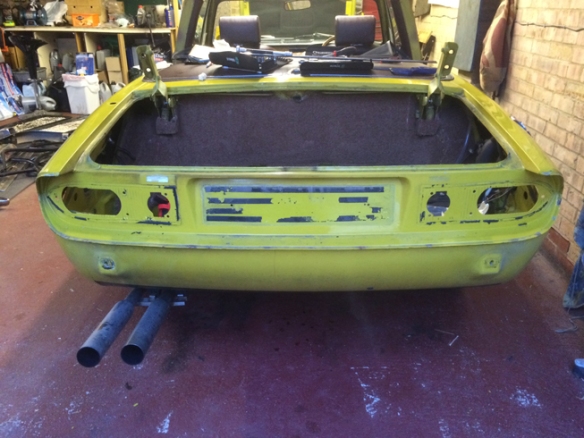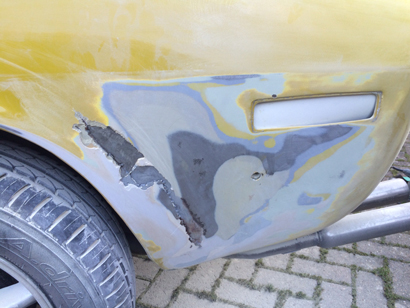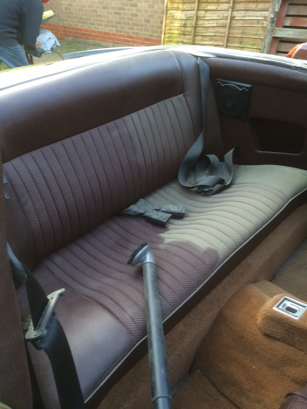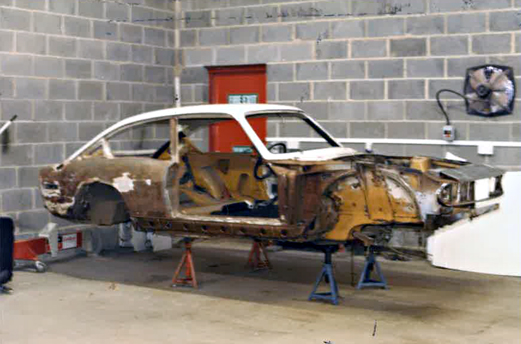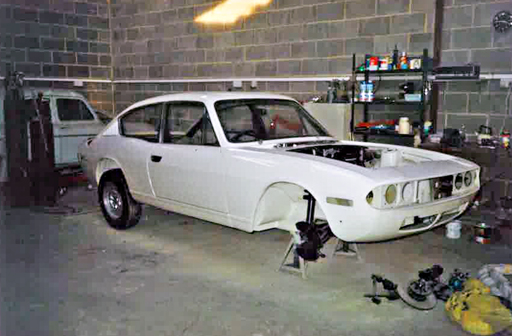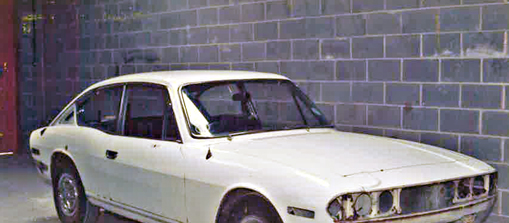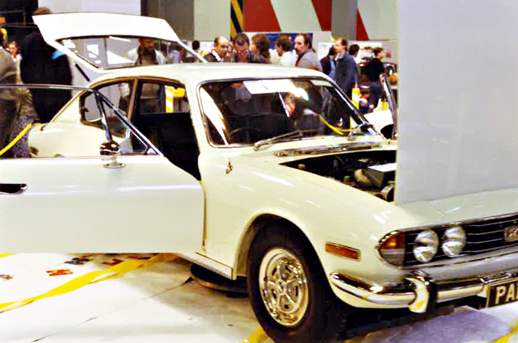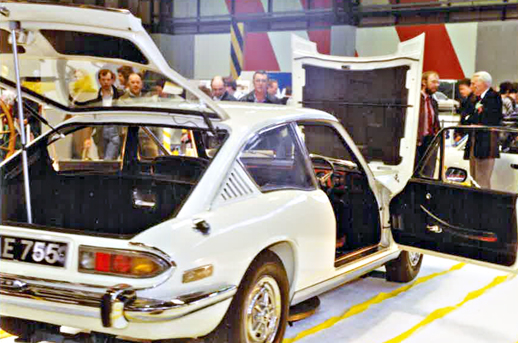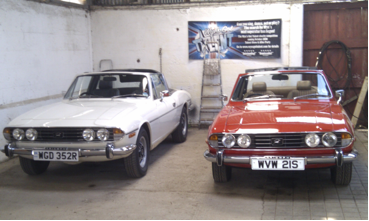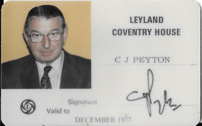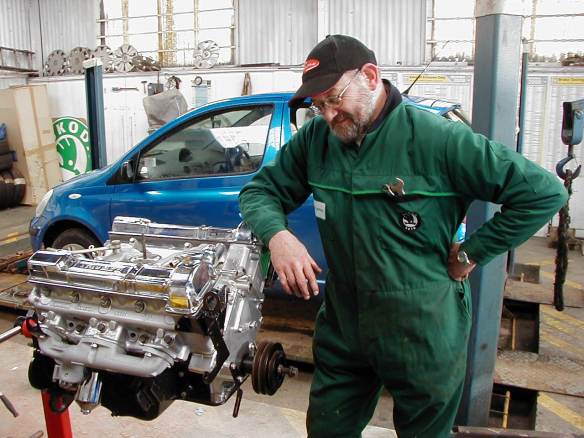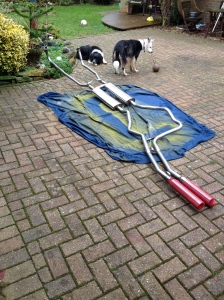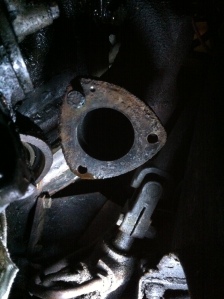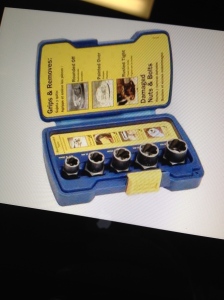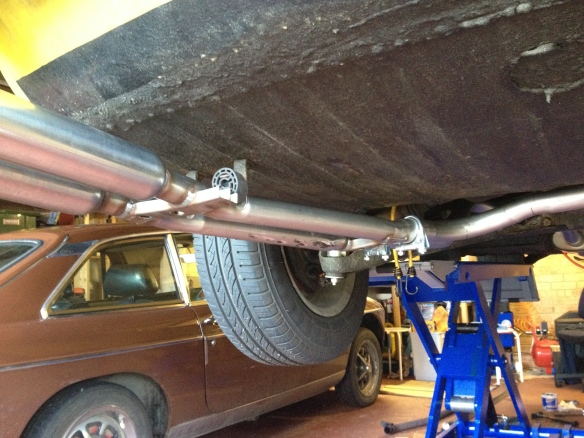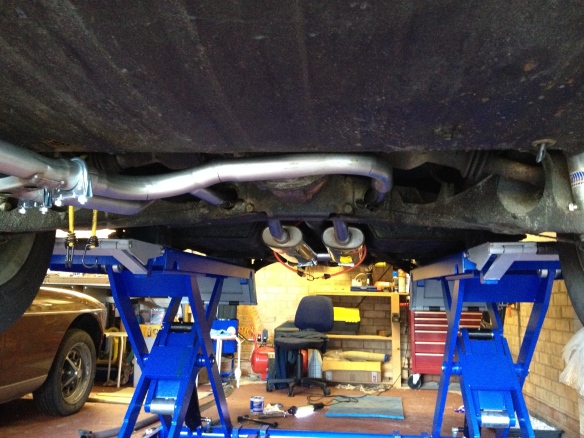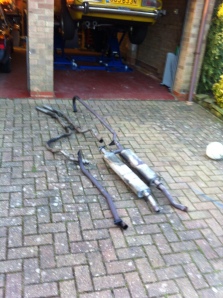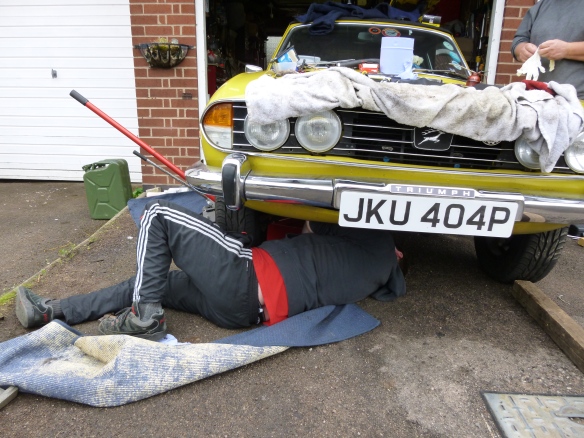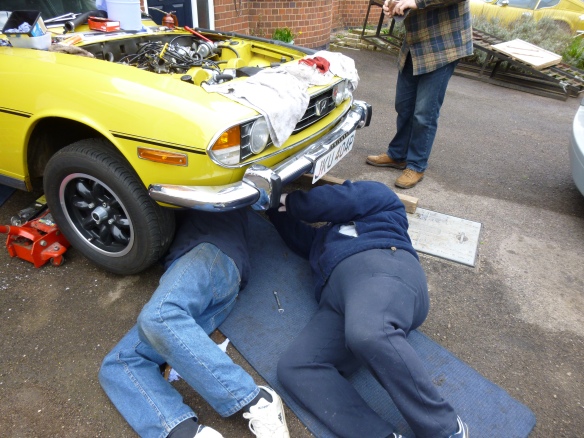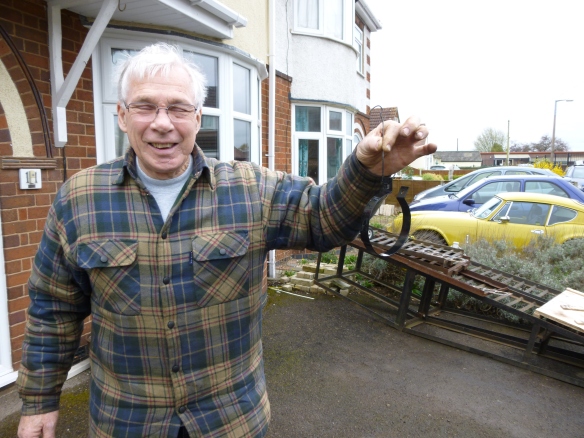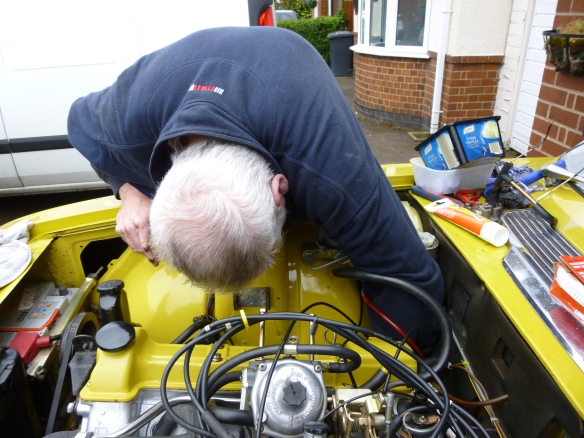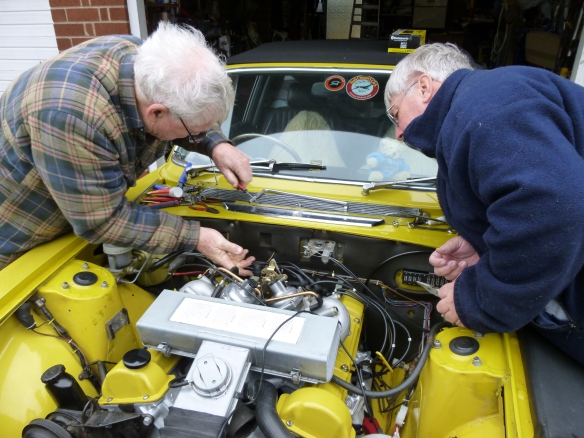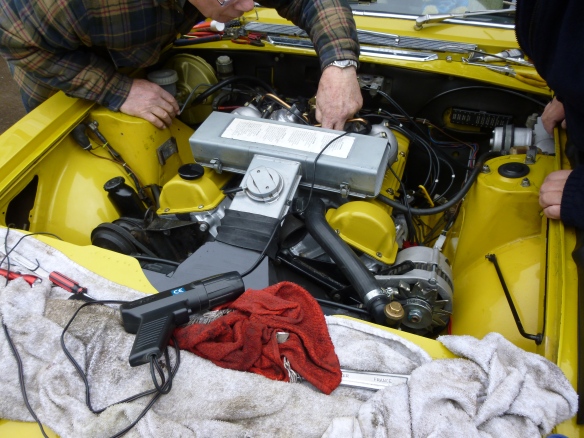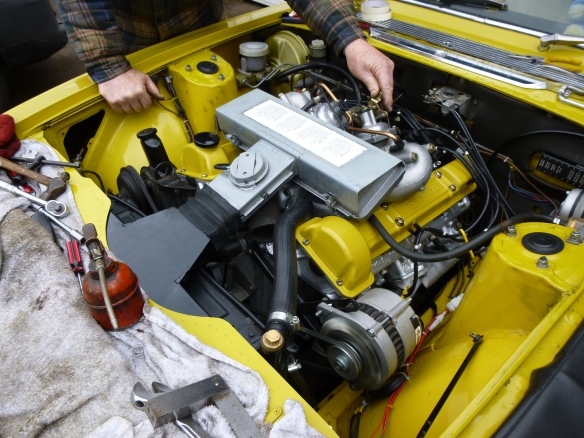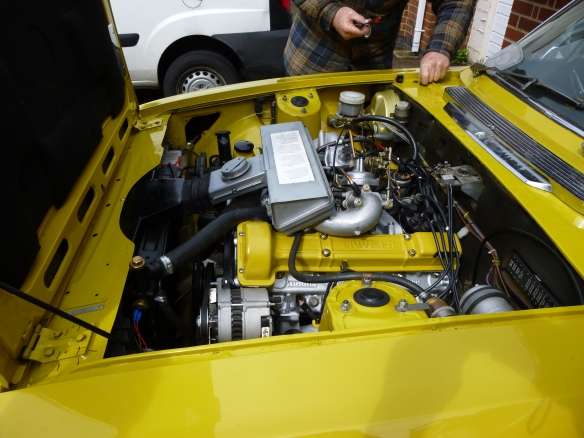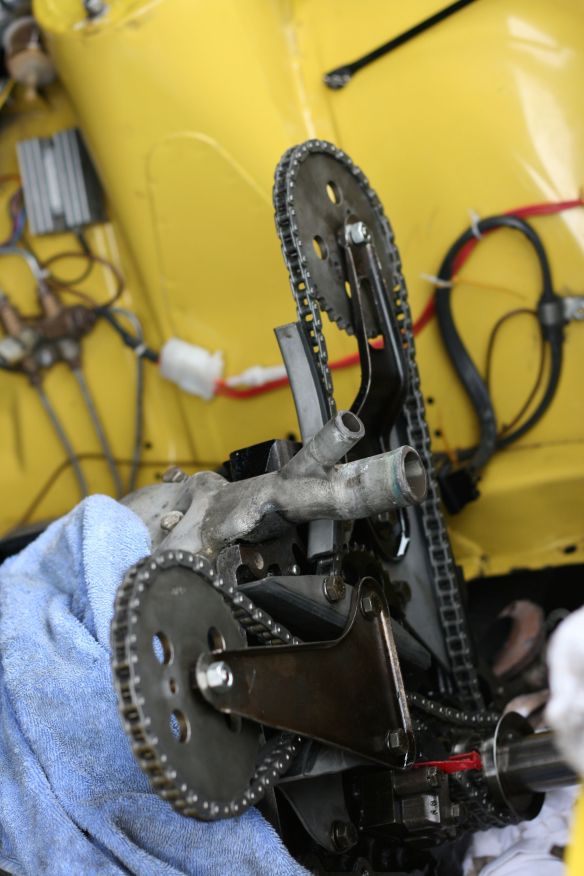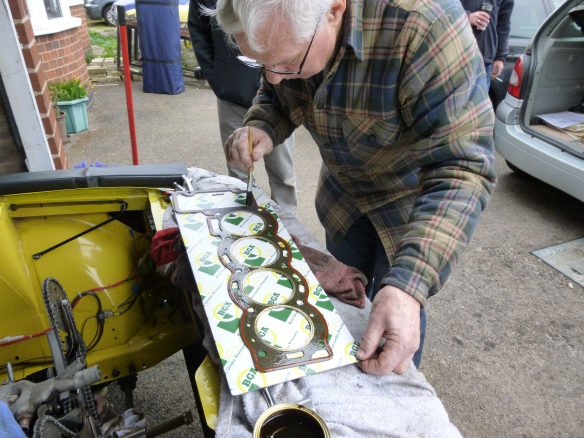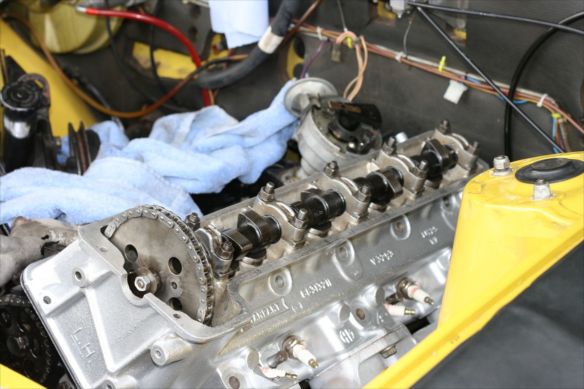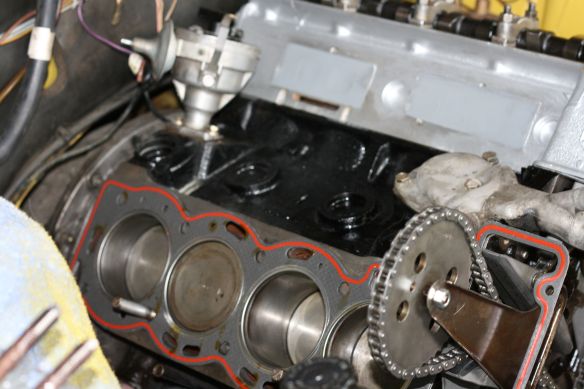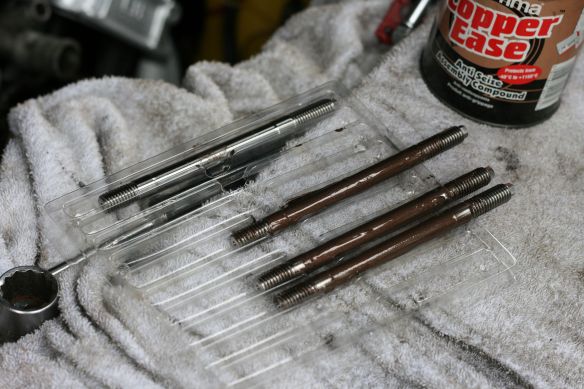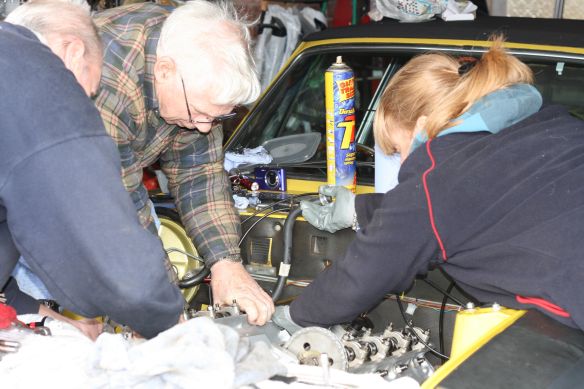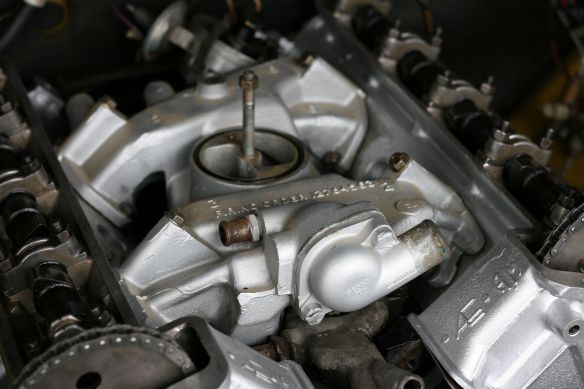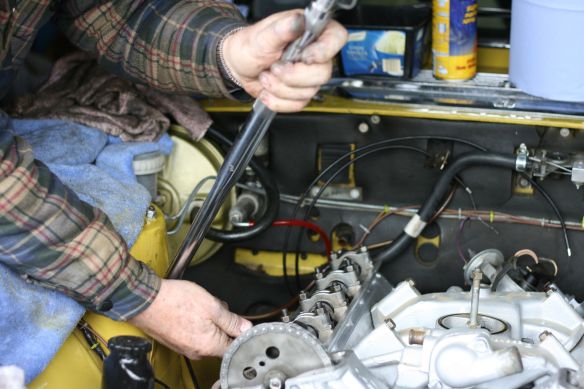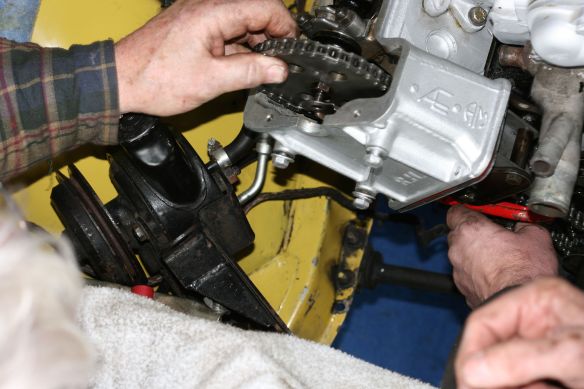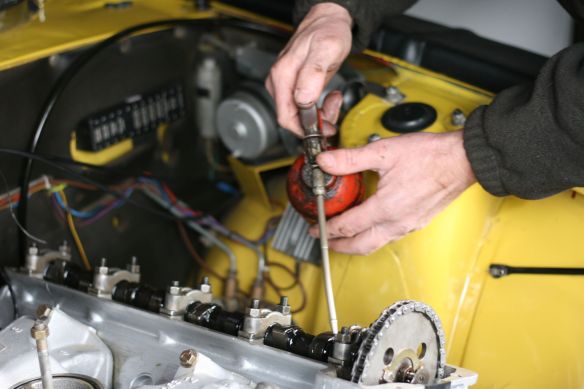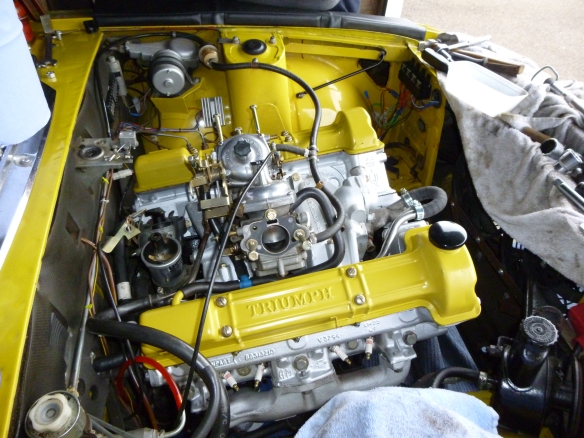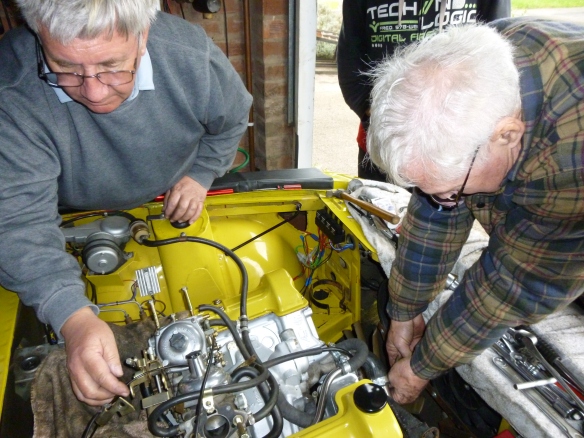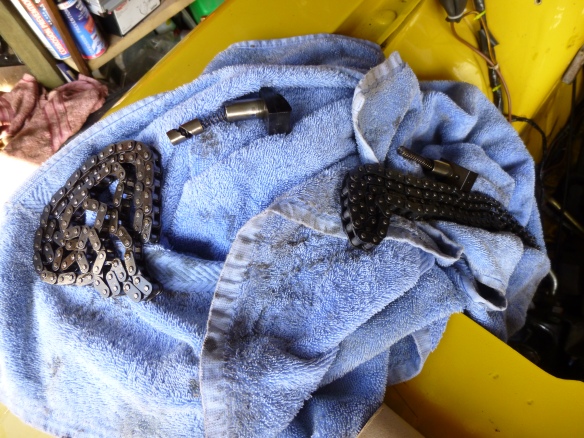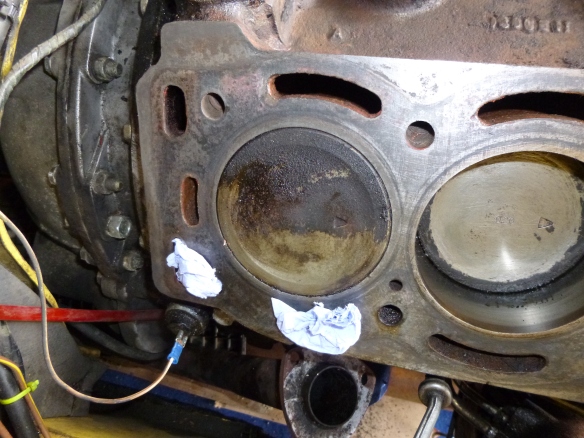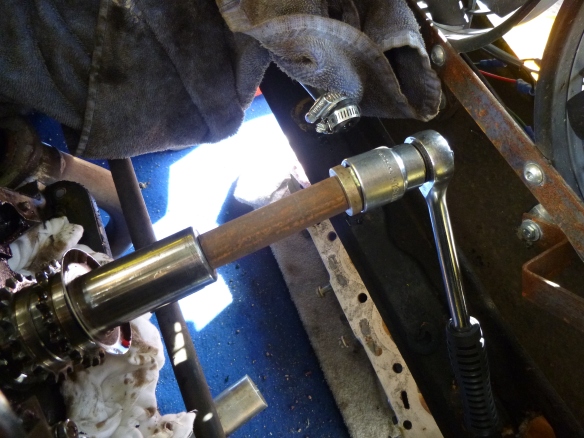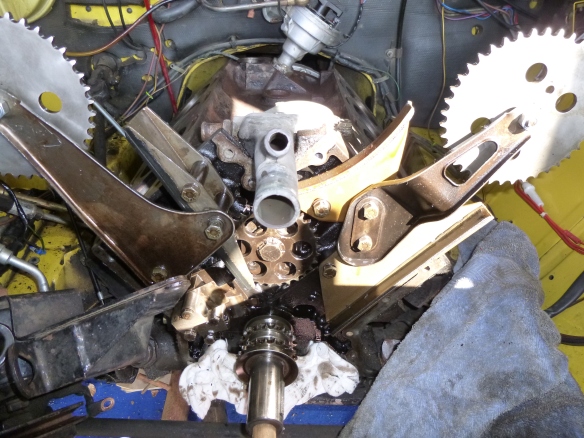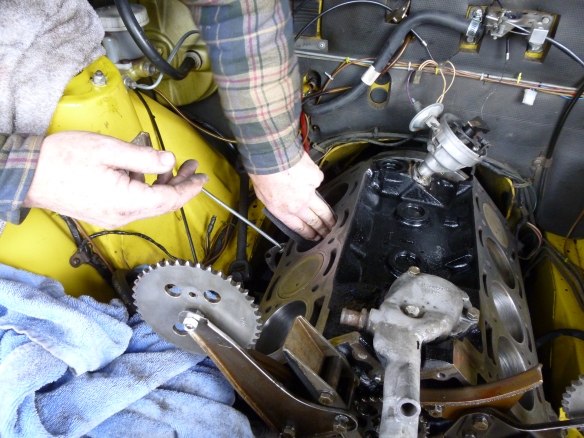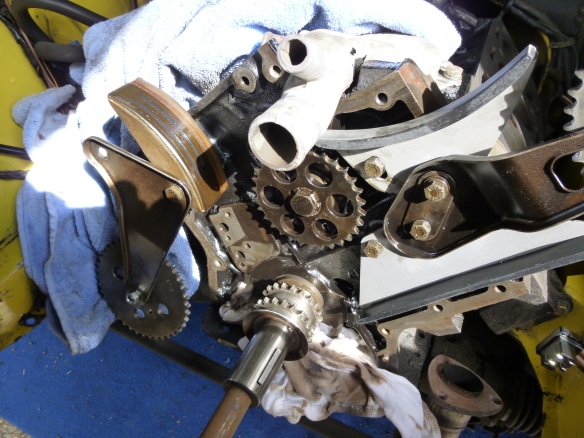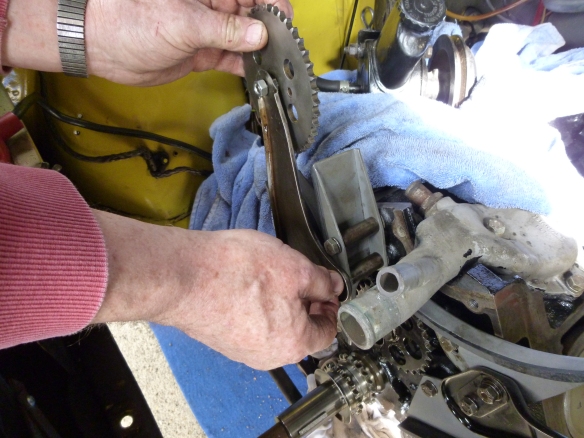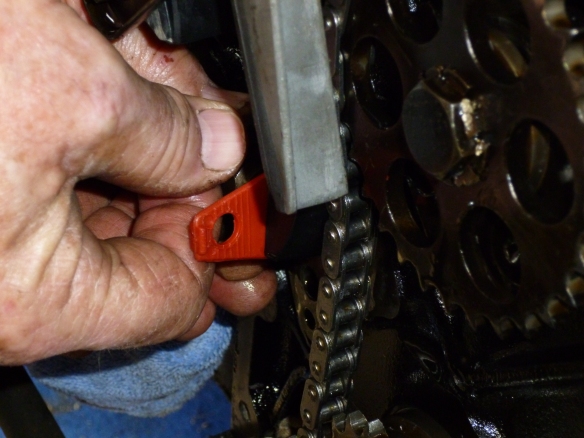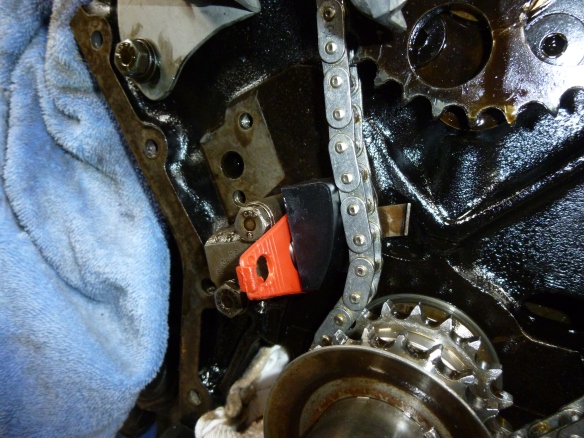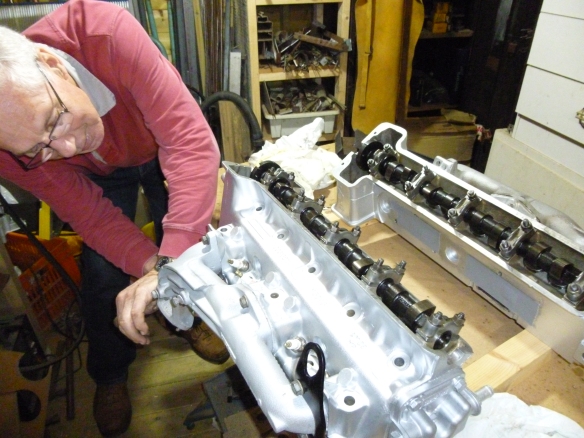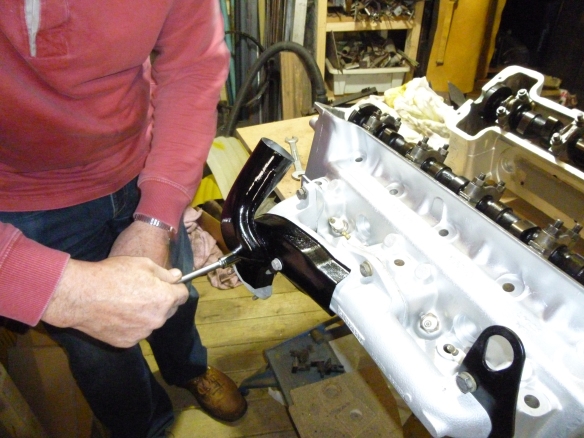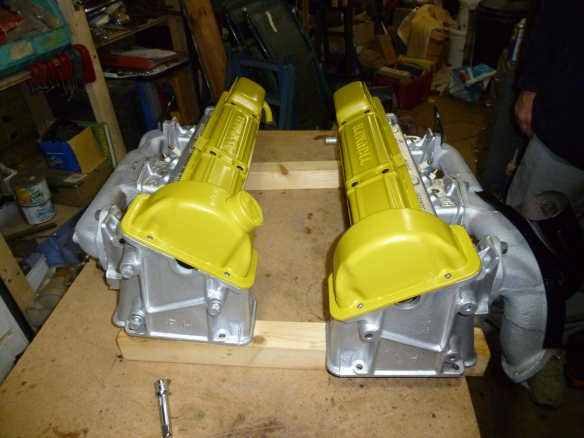The Next episode from Julie and Tony….
We left the Stag last time having made it to the spray booth, and just because it it now one of our favourite photo’s here it is again.
Now we wait for the updates each day from Iain to show how the next stage is progressing.
First we have the masking stage, keeping the paint to the places we want it and not where we don’t.
Next came the first spray action (nice suit!!!)
Primer then flattened ready for colour
We had by this time arranged collection of the car, so we knew that paint was going on the next day. At the end of the day we checked to see if any new photos had come through from Iain. We were collecting the car the next day so we were not sure if there would be pictures…
There was a message – “How much do you want to see?”
Now Tony said to send pictures through so he could tease Julie, as I had been (Julie’s writing this 🙂 ) a little excited each day as the photos had arrived.
So our first glimpse
And then…..
How beautiful!!!
The next day arrived and after the windscreen had been fitted – a wonderful and very satisfying job by all accounts – NOT we were to arrive to see the car and take her home.
Thanks to the windscreen fitter – Russell at Ultimate Windscreens, who did a fantastic job of refitting the glass and chrome trim.
We arrived to find the car waiting for us outside the workshop.
The bonnet and boot were to follow on in a couple of days but it didn’t take away from just how stunning she looks!!
We chatted with Iain about the final look, and it is just as we wanted. The car retains its character, this is our car, it will take us to work, go shopping as well as days out and classic rallys.
Now transport arrives – Thanks Steve for both taking the car to the workshop and safely home (Steve is also taking the car to and from the NEC for the Restoration show too)
and safely home
A few days later Iain arrived with the bonnet and boot, and very carefully – with only a few heart stopping moments they are fitted back to the car.
To get to this point the car we have spent around 150 hours stripping down, sanding and cleaning. There was then a further 90 hours with Iain at iKustoms
We still have to put the bumpers, lights, carpets, badges, grill etc back on the car – there is a nice long list.
All ready for the NEC Restoration show. See you there March 5th and 6th – come and see the car on the Stag Owners Club stand Hall 6 Stand 340.
